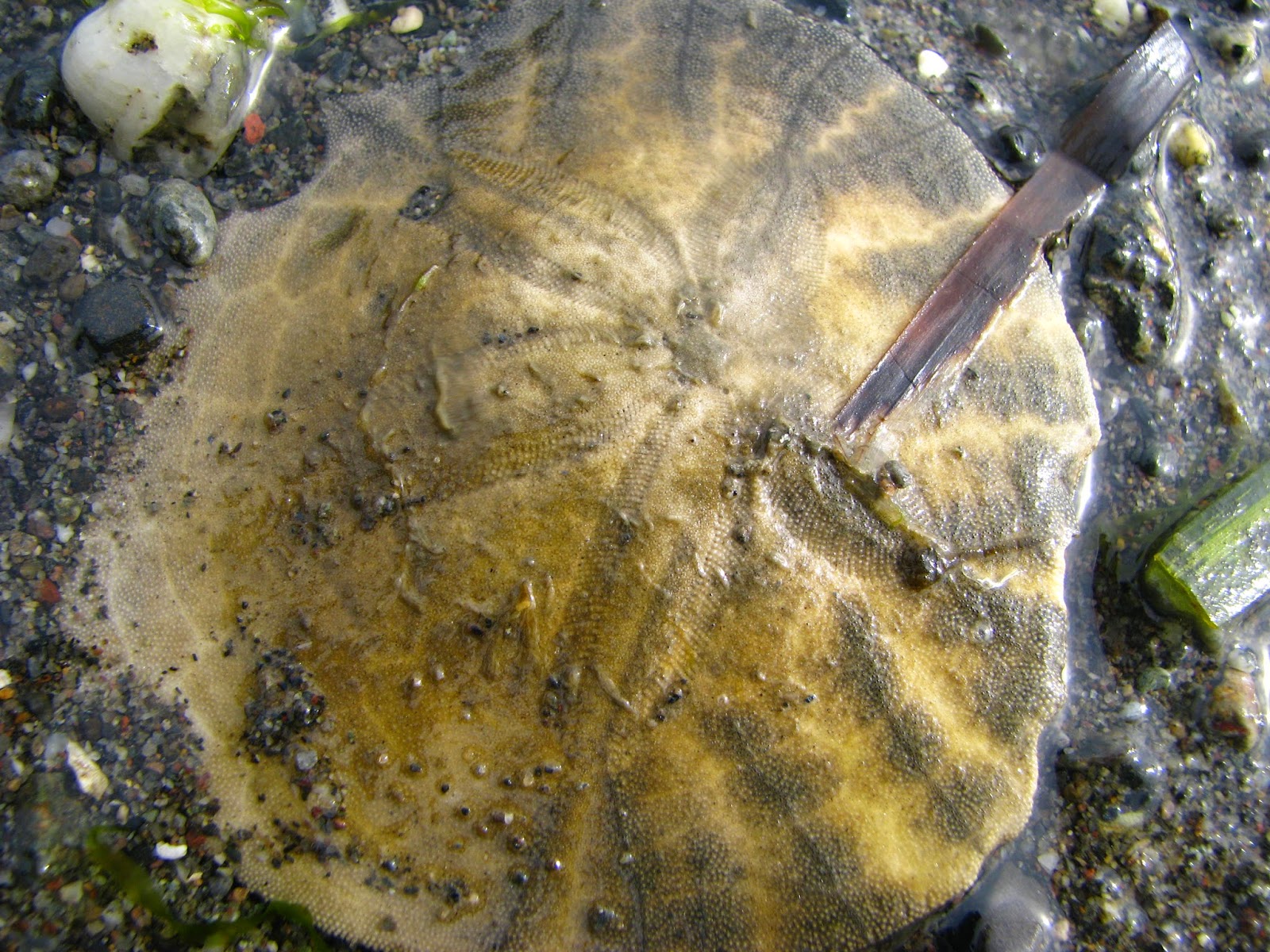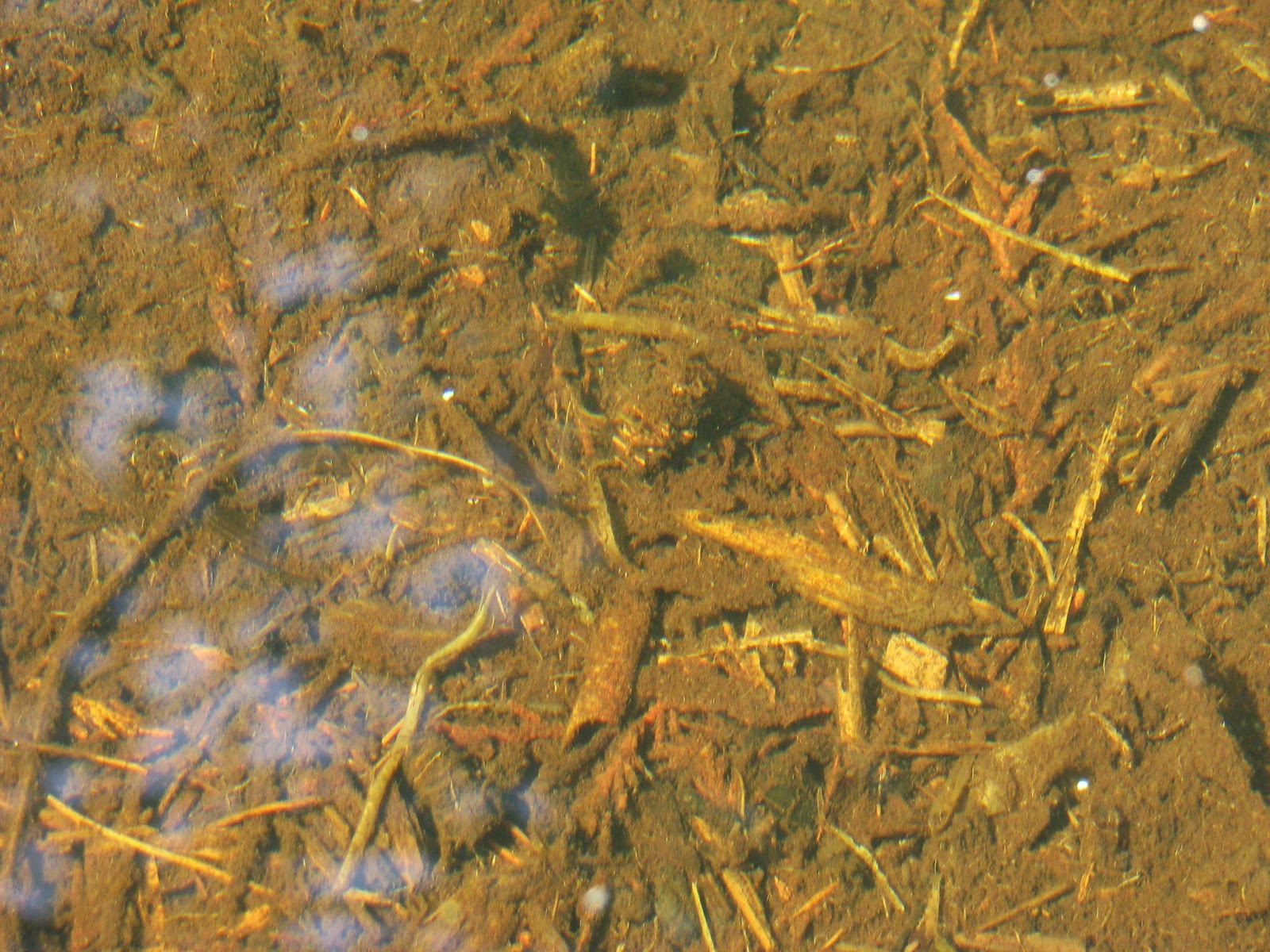So lets start with Washington Park, Anacortes. The first time I went to this park was for a botany field trip three years ago. I was so enamored of the plants that I keep returning. As it happens, there are some rather nice tide pools to explore on the beach there as well. There is a particular morph of a particular sea snail that is brilliant orange, it's beautiful.
The red, green flecked Christmas anemone, always fun to find and usually pretty sizable.

The size of a large tea cup saucer, this is one of the bigger anemones I have seen in the PNW intertidal zone. Apparently this species can live to be up to 80 years old!
There were lots of diversely patterned shrimp flitting around in the pools.
They come in all shapes and sizes...
 If you haven't heard of sea star wasting syndrome... well you will now. Here's a video... It's scary. The short story is that sea stars have been dying off in droves, and the reason why such a broad-spectrum, multispecies die-off is occurring is unclear, but you should read that report to get the full scope. We once had huge colonies of Pisaster ochraceus but now you are hard pressed to find any live, healthy sea stars at all. This is a dying sunflower sea star, its pseudopodia still flailing weakly, but not long for the world.
If you haven't heard of sea star wasting syndrome... well you will now. Here's a video... It's scary. The short story is that sea stars have been dying off in droves, and the reason why such a broad-spectrum, multispecies die-off is occurring is unclear, but you should read that report to get the full scope. We once had huge colonies of Pisaster ochraceus but now you are hard pressed to find any live, healthy sea stars at all. This is a dying sunflower sea star, its pseudopodia still flailing weakly, but not long for the world.Sculpin!
Its a beautiful place to be...

Juvenile fish or small forage fish were schooling around the rocky cliffs. Chocolate lily (Fritillaria affinis), one of the beauties of the balds.
Present in high abundance are both common and death camas. Common camas (Camassia quamash) is purple and has an edible root. Death camas (Zigadenus venenosus) is creamy yellow/white and is toxic...
We also saw, but mostly heard, a pod (are they pods?) of porpoises! Proof in the form of a tiny barely visible fin as one surfaces!
 Saw the first orchids of the year! Spotted Coralroot (Corallorhiza maculata) and Pacific Fairy Slippers (Calypso bulbosa)
Saw the first orchids of the year! Spotted Coralroot (Corallorhiza maculata) and Pacific Fairy Slippers (Calypso bulbosa)
Shooting stars (Dodecatheon pulchellum), always need to look at their bizarre inside-out flowers.
Next up Clayton Beach: To reach the beach first through the woods you must go... And there you may find some lovely stands of Spotted coralroot!

Those dratted tent caterpillars are everywhere! They have reached the point where they are straying away their little tent nests to hang out by themselves.
A tiny clam shell, and a much much larger clam shell
As always, a lovely view of the islands

 Fringecup (Tellima grandiflora, a Saxifrage) opens its delicate little flowers with pale yellowy green petals that mature to white, then pink as they age. Baldhip rose (Rosa gymnocarpa) has much smaller blossoms than the very prevalent and well known Nootka rose, but is quite pretty all the same. And the hips aren't laden with scratchy little hairs around the seeds either...
Fringecup (Tellima grandiflora, a Saxifrage) opens its delicate little flowers with pale yellowy green petals that mature to white, then pink as they age. Baldhip rose (Rosa gymnocarpa) has much smaller blossoms than the very prevalent and well known Nootka rose, but is quite pretty all the same. And the hips aren't laden with scratchy little hairs around the seeds either...Brandon pointed out a grand fir that was particularly exuberant in showing its new growth.
And moving on...
For a while I have been hearing about this new trail, so we decided to go hike it. The Rock trail is nice, already heavily used, and a shortcut to reach Lost Lake. This year the ferns have been dazzling. Below, a bleeding heart seed pod bursting open to shed this year's crop.

We intruded upon a rather miffed green Pacific chorus frog. He or she hopped away to hid from our tromping feet and prying eyes.
One unknown white butterfly/moth
This strange fellow is some kind of tussock moth caterpillar. Some can induce a nasty rash if you touch them. Luckily neither of us did.
An enormous root wad with an Otter to compare. Shallowly rooted conifers aren't hard to push over here...
We eventually got to the lake, due in absolutely no part to my navigation skills (because I don't have ANY). Lots of nice water lilies just opening.Its pretty long
Don't know what this cute little critter is, didn't get the longest look at him.
Lets play can-you-spot-the-caddisfly? There are at minimum two in this picture. Caddisflies are aquatic insects (that salmon fry eat!) that build little homes out of pebbles, sticks, whatever substrate they find suitable in their environment. These, being in a mud-bottomed lake, are made of twigs and grass...
A nice view from the trailhead across Bellingham Bay at the spit, Portage and Lummi Islands
It is apparent that one of my favorite places to go is Racehorse Falls. It is a beautiful place, but sorely misused by a small portion of the people who recreate there. The number of fire pits with broken beer bottles and warpped cans increases every time I visit it seems. This is not a hike in either, its a few hundred yards from the pull-off to park. It seems to me no mean feat that people can consciously leave such piles of easily removable recyclables and debris from the site. For @#$%'s sake you carried them in heavy with intoxicating beverages, is it so hard to carry them out!? Anyway. Its still beautiful no matter how hard a few try to make it otherwise. And there are coho fry in the creek.

A dead mourning cloak. The back of many butterflies' wings are some kind of camouflage, like this one.
Fading and a bit tattered, the colors are still pretty rich and intricate.
Those little crab-walking, pale, bee-eating spiders are back in force, here's one blending in neatly on a fresh thimbleberry flower.
If you keep trucking up the (active) logging road, you get to this vista, giving you a remarkable view of the N Fork of the Nooksack.
A wild river wanders, meanders, braids... Have a fantastic Saturday!














































